By Luke Humphrey
Photography by Meleri York, Madison Meyer, Jaxon Nash and Mallory Gowen

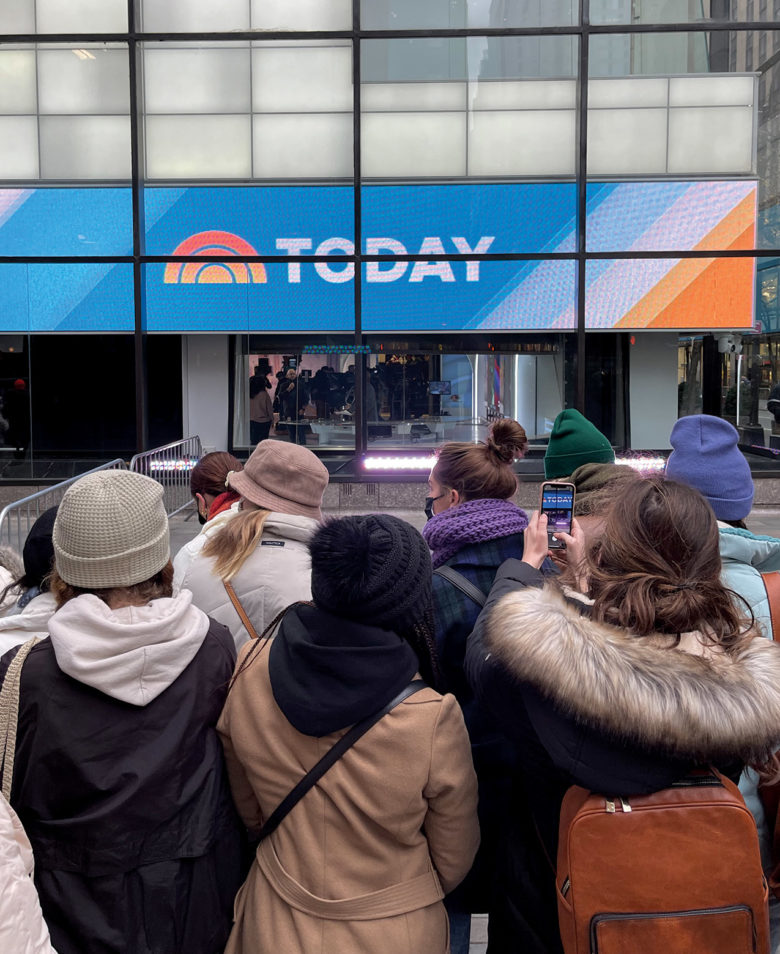
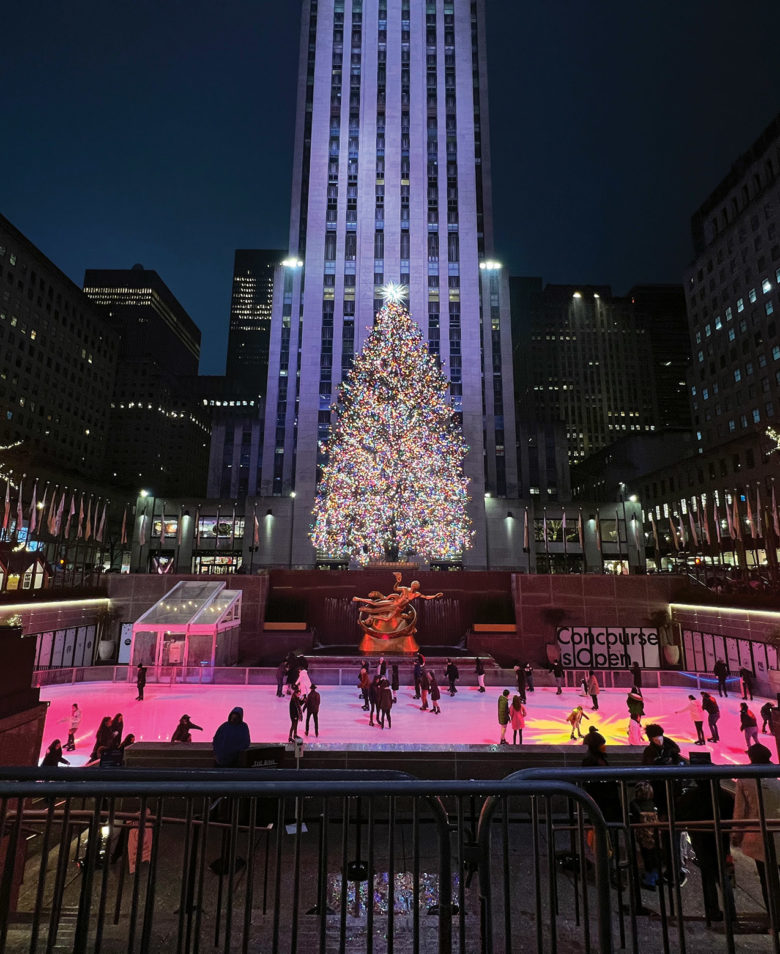
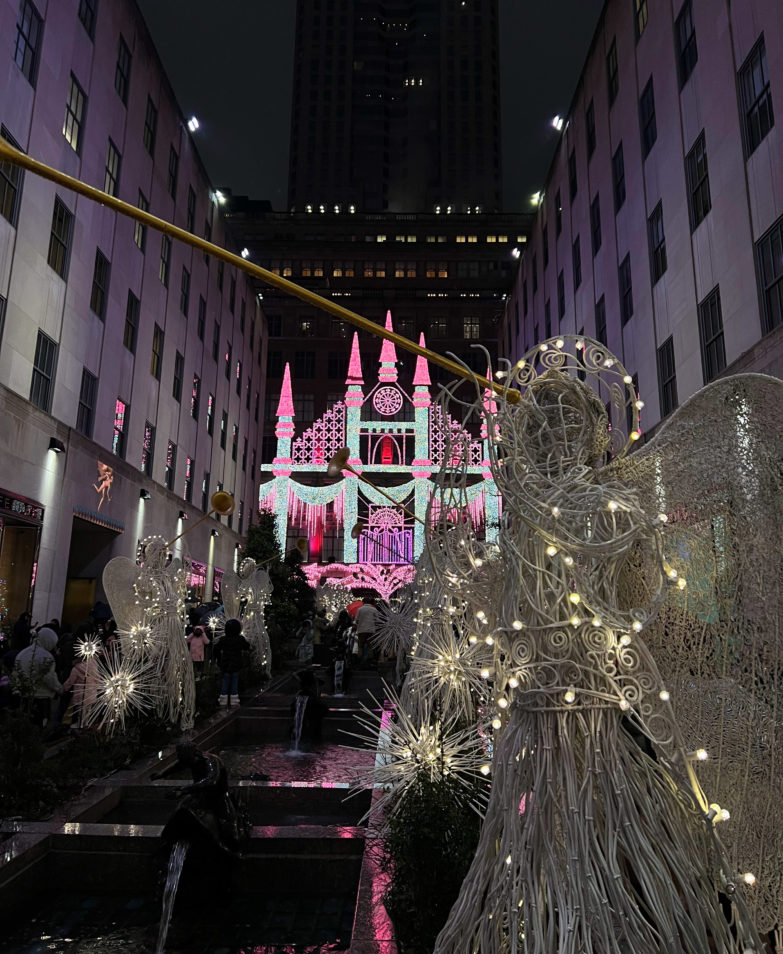
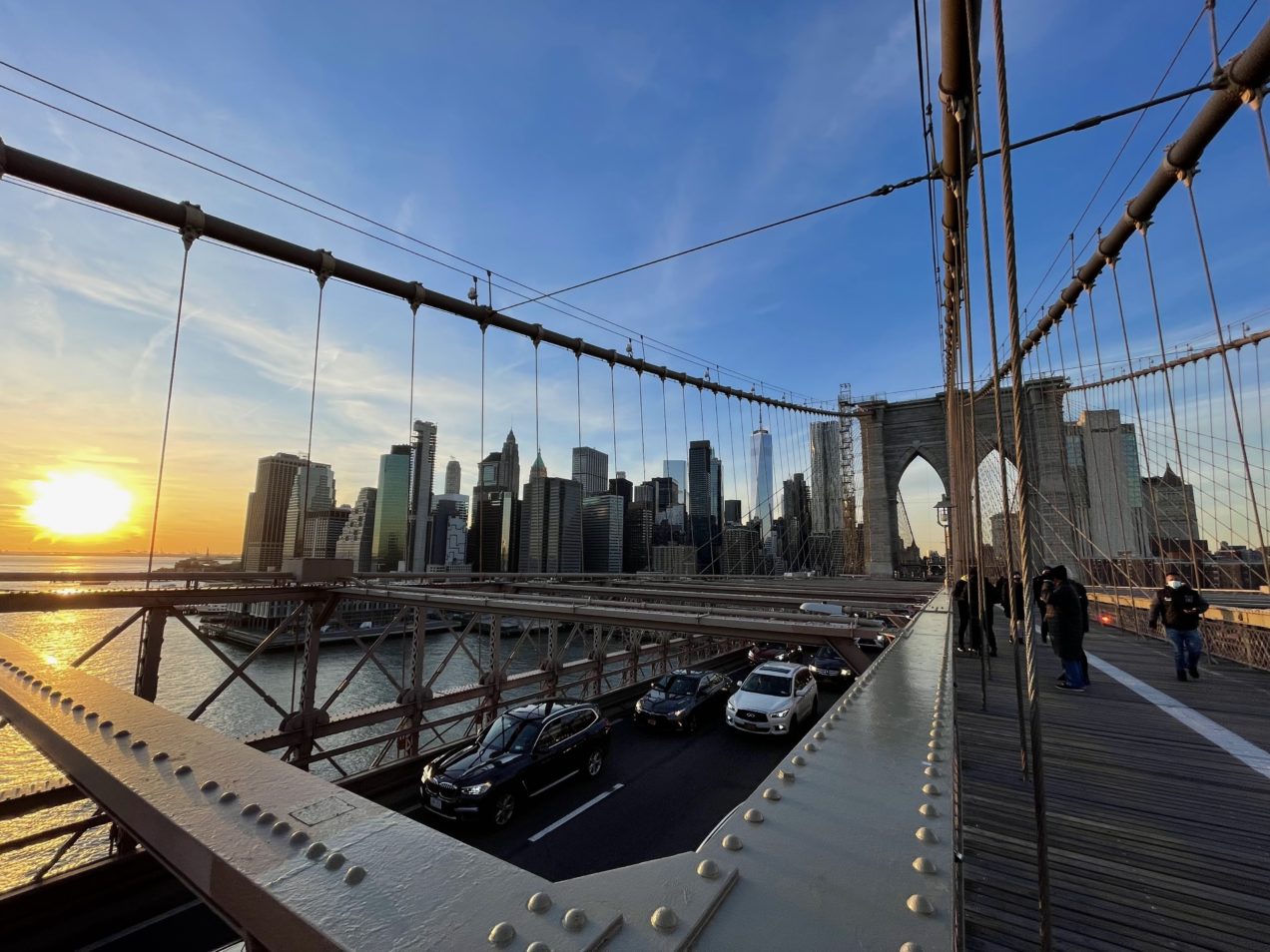
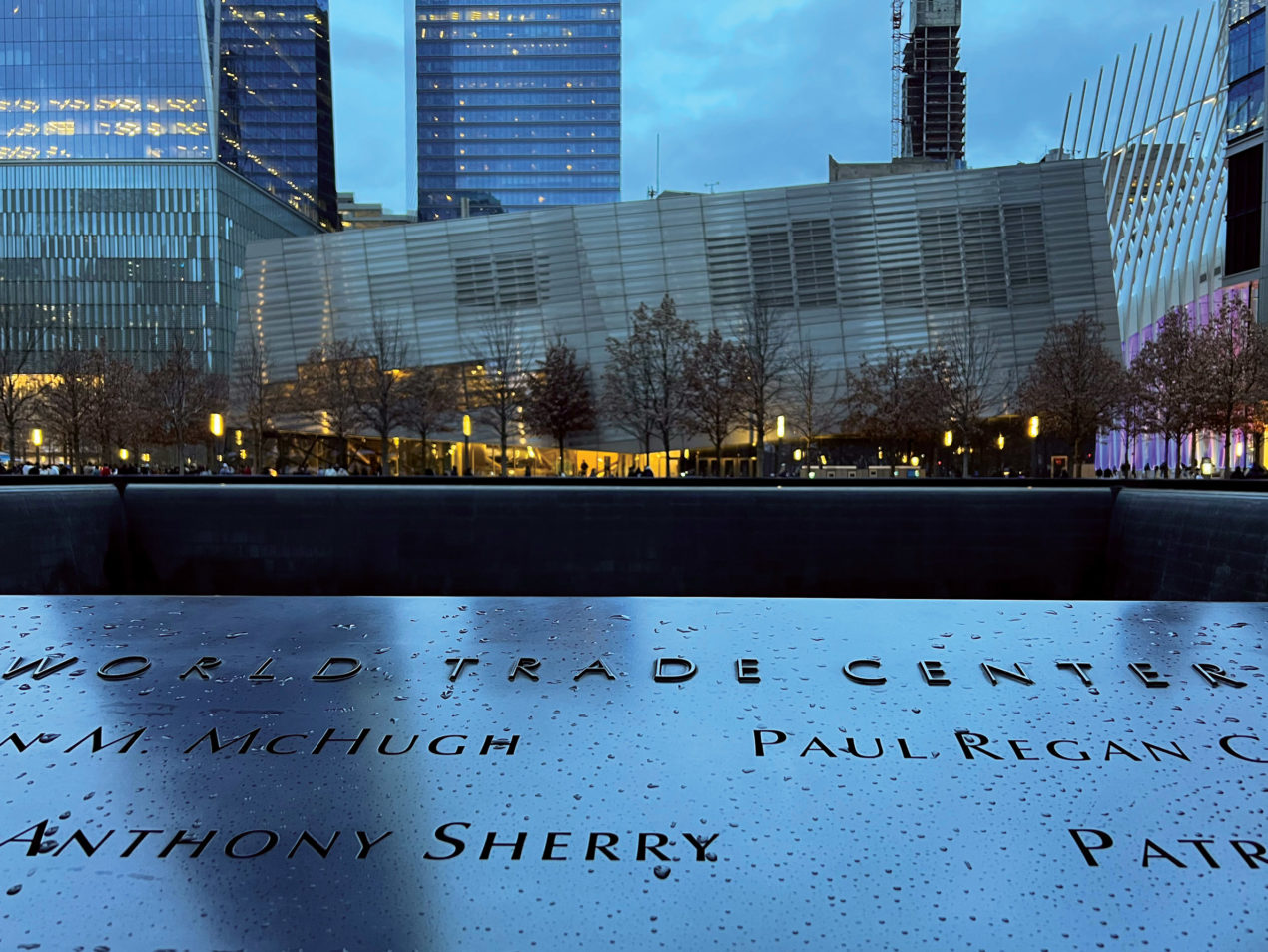
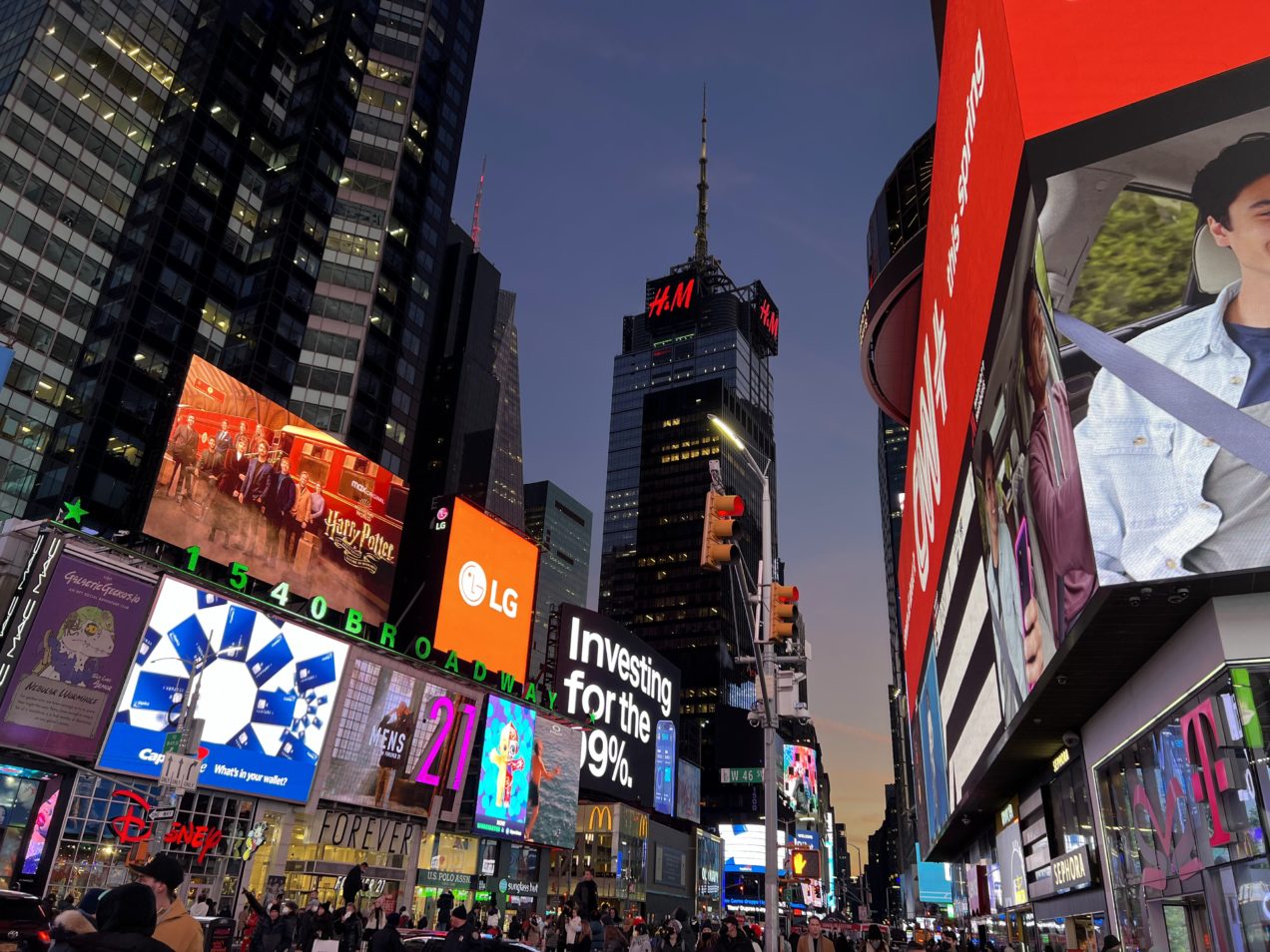
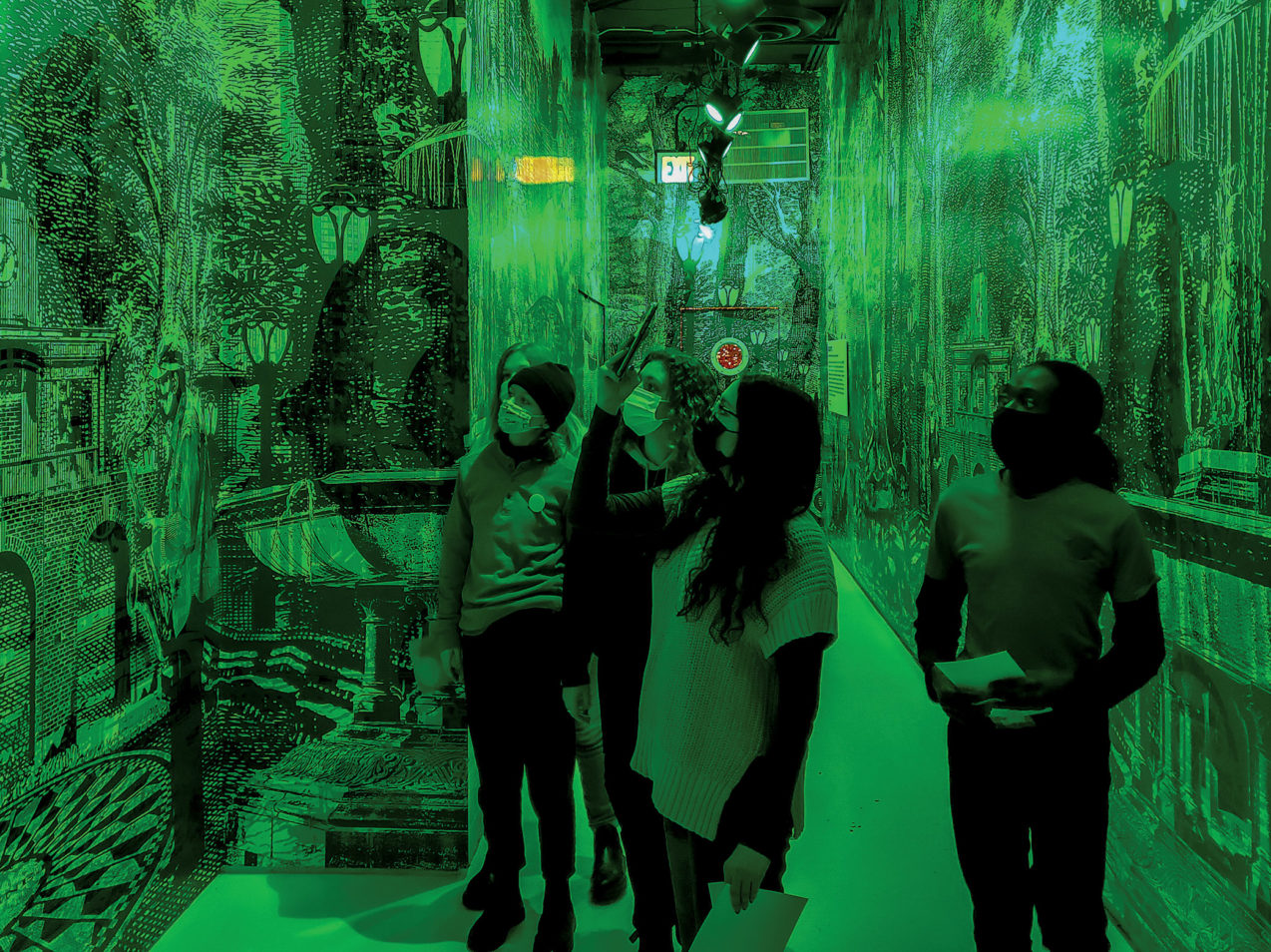
On Jan. 1, more than 100 Harding students and professors — seven groups spanning multiple programs, departments and colleges — arrived in New York City for the educational experience of a lifetime.
Every year, students take this trip for class credit by completing assignments before, during and after. Over the course of a week, the groups learned through various channels, from museums and guided tours to real-life case studies and visits with Harding alumni. Even beyond their scheduled time together, students continued to learn important lessons about the city’s diversity and cultural significance by navigating its vast subway system and visiting its most iconic landmarks and locations.
These lessons did not come without their own challenges; the ongoing COVID-19 pandemic spurred everyone to think on their feet as planned events were canceled or locations closed without notice. However, due to the ingenuity and resilience of the groups’ leaders, students were able to have an eventful trip learning real-world applications about their respective areas of study.
Only hours after celebrating the new year, students and professors arrived at the hotel — conveniently located in Times Square. That evening, groups walked together around Times Square and Rockefeller Plaza to familiarize themselves with the streets surrounding the hotel, concluding their most restful day of the trip. The following days were packed full of memorable experiences, crowded subway rides and record-breaking numbers of daily steps walked.
On Sunday morning, Jan. 2, groups gathered separately for worship; afterward, most groups traveled downtown to the National September 11 Memorial and Museum. Students, who were either too young to remember the attacks or not yet born in 2001, spent a somber afternoon walking through the museum learning about the history of the attacks and mourning the loss of nearly 3,000 lives. One group entered the museum expecting only to reflect on the tragedy but left with an unexpected lesson in the repercussions of such an event.
The group from Paul R. Carter College of Business Administration — led by Dr. Glen Metheny, associate professor — also discussed the events from a business perspective. Senior Kalie St. Clair, an international business major, learned about the effects the attacks had globally: not only did more than 50 countries lose citizens during the attacks, but also many large companies were left without offices, and the stock market experienced a drastic plunge. “While this wasn’t the focus, it is interesting seeing how it all played out because the market had to come back from this event,” St. Clair said. “Corporations and countries all over were able to come together, despite the significant loss, to bring the market back up and ‘start’ the country again. It was fascinating to see how the business world was able to come back from this loss and grow into the huge international market that we see today.”
Metheny echoed St. Clair’s thoughts and discussed how there is a business aspect to everything. The museum has now become a business by selling tickets, creating attractions, hiring employees, etc. “There is a price for everything,” Metheny said. “From a museum to Yankee Stadium, there’s a price for everything.” This tragic day in history provided many opportunities for education, and the business students did not waste theirs.
Later that afternoon, a group from the social work program and College of Bible and Ministry — led by Dr. Andrew Baker, assistant professor of Bible; Dr. Kathy Helpenstill, associate professor of social work; and Kyle Thompson, assistant director for Community Connection and Social Impact — rode the subway from the memorial to Harlem for an exciting dinner with Terrance Talley (’88), a social work director.
Talley met the group at Amy Ruth’s, a home-style Southern cuisine restaurant, for a lively evening filled with laughter and stories. Between bites of fried chicken, students listened to Talley speak about his experiences as a social worker in New York City. He originally came to the city seeking two things: find a career in public relations and be challenged. When a career in social work called him instead, Talley accepted the challenge and has been changing lives for more than 25 years.
Inspired by Talley’s stories, senior social work major Eden Henderson acknowledged the importance of a community working toward a common goal, affirming her desire to be a social worker. “If anything is going to get done, it has to be through a team that is each contributing their strengths,” she said. “A single person is incapable of solving big issues by themselves, but when they are able to pull others in on the project and work with them, things are able to get done more efficiently and effectively.”
The next day was filled to the brim with tours and meetings. A group of students from Carr College of Nursing — led by Drs. Lisa Engel and Juli Lane, associate and assistant professors — toured the Henry Street Settlement, an immigrant tenement community prominent in the world of public health and nursing. Business students participated in a tour guided by Annaline Dinkelmann, her seventh time to lead Harding students. Drawing from her own career on Wall Street, Dinkelmann led the students around famous locations in the eight-block radius such as the New York Stock Exchange and the Federal Reserve while sharing fun facts and stories. When prompted about her successful career, she simply stated: “Networking is your net worth.”
After lunch that day, the group from the apparel merchandising program — led by Becky Boaz, assistant professor — met with Colton French (’18). French, who received his master’s from University of the Arts in London, currently works as an assistant stylist at Madewell and met with the students briefly inside Brookfield Place, a popular shopping destination in downtown Manhattan. The attentive audience of aspiring fashion professionals was eager to learn how French managed to go from Arkansas to London to New York City. Mirroring the networking theme of the day, French attributed his success to his connections. He explained the importance of knowing the right people and knowing where to look. The group left feeling inspired about their future careers in the fashion industry.
The following day proved to be a popular one for museums. The apparel merchandising group visited the museum at Fashion Institute of Technology, the social work and Bible group visited National Museum of the American Indian, and the groups from the communication department and Cannon-Clary College of Education both visited Lower East Side Tenement Museum.
The education group — led by Courtney Cottrell, graduate assistant; Matthew Perring, director of professional field experiences; and Dr. Cheri Smith, associate professor — visited the museum with the mindset of educators who might have students living in similar conditions. The group’s tour of the museum was unplanned but ended up being a highlight. Cottrell, Perring and Smith improvised the first few days of the trip because the planned three-day workshop at Columbia University was canceled at the last minute due to concerns about COVID-19. Their backup plans still created memorable educational experiences.
Prior to the trip, students were required to read A Tree Grows in Brooklyn by Betty Smith. The group leaders connected the dots between living conditions of the novel’s protagonist and the Tenement Museum. The museum tells the untold stories of ordinary, working-class people who moved to New York City and lived in dilapidated, unfavorable housing. Students were encouraged to imagine their future students lived in these compact spaces — potentially a reality for some of these soon-to-be teachers. While on the “Hard Times: 1880s” tour, students were given an impromptu lesson in empathy: for Natalie Gumpertz, the 1880s woman whose city life is chronicled throughout the tour; for others living in similar conditions, past and present; and for their future students.
In the College of Education, students are taught not only to become effective educators, but also how to think beyond the classroom and understand their students. Junior Melanie Barnes, an elementary education major, was reminded of the importance of recognizing the diverse backgrounds of her future students. “We need to take these differences into account when planning lessons and managing our classrooms,” Barnes said. “We as teachers need to be willing and able to accommodate different students’ needs in order for them to succeed.” The unforgettable Tenement Museum left an impression on everyone who visited.
Wednesday began cold and rainy, but weather did not prevent the groups from having an eventful day. The business group toured Yankee Stadium; the education and social work and Bible groups visited A House on Beekman, a nonprofit in the South Bronx; the apparel merchandising group met with Instagram influencer Caroline Vazzana; and the nursing group toured the History of Nursing Museum at La Salle University in Philadelphia.
The communication group — led by Noah Darnell, instructor; April Fatula, director of Student Publications; Dr. Jim Miller, associate professor; and Dr. Jack Shock, distinguished professor and the originator of the annual trip — explored the American Museum of Natural History in the morning. Before they were allowed to walk around the museum, students listened to their daily case study of the First Amendment. Adjusting to the challenges COVID-19 posed to their itinerary, leaders established the five-day First Amendment tour, focusing each day on one freedom guaranteed by the U.S. Constitution.
Students visited locations significant to the freedoms of religion, press, speech and assembly; and on this rainy day, Fatula discussed the freedom to petition regarding the controversy surrounding the infamous statue of Theodore Roosevelt proudly displayed on the museum’s front steps. Students huddled under umbrellas to hear her explain why the statue was being relocated from New York to North Dakota due to the power of petition. Dozens of people led the charge to remove the statue, most of whom are highlighted in a special exhibition inside the museum.
Junior Ben Lane, a public relations major, was impressed by the museum’s willingness to provide multiple perspectives on a complex issue. “The statue is Roosevelt valiantly posed on a horse with a Native and African figure at his right- and left-hand side, which, in light of the United States’ racial history, symbolically communicates hierarchy,” Lane said. “Even though this wasn’t the artist’s intention, it still symbolizes the racial hierarchy which only compounds the need for proper symbols within our society. I’m thankful I was able to learn about this on our trip because it provided a non-charged and inviting environment to learn about this statue’s history, its meaning and how it affects people.” The group went on to discuss other freedoms at locations such as St. Patrick’s Cathedral, Museum of Modern Art, and Grand Central Terminal.
Late that evening, the theatre group — led by Ben Jones, assistant professor — met with alumnae Julie Goddard (’21) and Katherine Stinnett (’18). The two share an apartment and are both navigating the search for a successful career in theatre in New York City. In solidarity with the city that never sleeps, the group stayed up later than anticipated, crammed into one hotel room, and listened to the two women share stories of chasing dreams and working with celebrities such as Anne Hathaway and Jared Leto. Goddard shared stories of the Holy Spirit calling her to New York and how all the financial stars aligned for her to be able to afford it. Stinnett shared what it was like to be an extra in television shows and movies in order to gain acting experience.
At one point, Jones and Goddard shared an inspiring conversation about chasing dreams that filled the room with energy and enthusiasm. Goddard’s story of moving to the city involved uncertainty and fear of not having every detail ironed out. Jones reassured anyone wanting to follow in Goddard’s footsteps by emphasizing that sometimes the pieces fall into place once the decision to pursue a dream is put into motion. “Knowing where fear meets preparation, there will always be a moment — if you have a dream — where you have to dive,” Jones said. Goddard echoed his sentiment of facing dreams head-on with a simple statement: “You have to have faith that if God is going to bring you to something, he’ll bring you through it.”
Some of these students’ dreams are to act, sing and dance, and some dream of being behind the scenes. What better way to learn about all facets of theatre than by seeing plays and musicals. As a group, they saw four productions: “Cinderella,” “Caroline, or Change,” “The Play That Goes Wrong” and “Winnie the Pooh.” Outside of meeting times, students were required to see two more productions on their own. Their trip was designed with copious amounts of free time, and many students took advantage of this by seeing as many as 10 productions ranging from “Hamilton” to “Flying Over Sunset.”
Thursday’s schedule required some groups to travel outside of Manhattan. The social work and Bible and business groups traveled to Long Island to visit Timothy Hill Children’s Ranch — founded by Jerry Hill (’65). The education and nursing groups visited the Statue of Liberty and Ellis Island, where nursing students spent a few extra hours. After walking in the footsteps of more than 12 million immigrants, the group began their tour of the abandoned Ellis Island Immigrant Hospital. The tour was guided by a passionate man named Fred Voss, the brother-in-law of David Kratzer, a former adjunct professor in the College of Sciences in the early ’80s.
Voss began the tour in the Registry Room, where health professionals would keep an eye on anyone who needed medical attention. Taking no chances at spreading diseases, doctors would often grab people if they were simply out of breath and take them to the hospital through a series of connected hallways and tunnels. Upon further examination, immigrants were either allowed to enter the city or admitted to the hospital. The group walked through these halls until they made their way to the hospital, learning along the way about its impressive history.
Giving the students a well-rounded experience, Engel and Lane periodically chimed in with connections to what they were teaching in their classes. Students learned that the hospital was often used for education. One room led to a morgue with a special area for students to watch autopsies and learn about illnesses that ailed a multitude of the immigrant patients. The three-hour tour allowed ample opportunities for students to picture themselves learning in this fast-paced environment. They gained an appreciation for the Ellis Island nurses — who lived on the island and worked six, 12-hour shifts every week in the early 1900s — and the current caretakers who strive to preserve the historic island.
On Friday, groups made the most of their last full day in the city. The education group met with two of their heroes: Sophie Blackall and Brian Floca, both children’s book authors. The nursing group served breakfast at the Bowery Mission, a support center for people without housing. The social work and Bible group met with activist Stephen Green and joined the business group to meet Dr. Chip Roper of VOCACenter, a nonprofit team of vocation coaches. The theatre group toured the Hudson Theatre, after touring the Tony Kiser Theatre with alumna Sarah Harris (’16) the day before. In addition to their academic responsibilities for the day, the apparel merchandising and communication groups visited Color Factory, an immersive art exhibit centered on colors.
On Saturday, Jan. 8, the seven groups said their goodbyes to the Big Apple and headed home. Avoiding nationwide snow storms, everyone returned safely to their hometowns and headed back to Searcy to begin the spring semester. The trip successfully provided another opportunity for students to expand understanding of their majors through firsthand experiences. They returned to campus with many stories to share, inspiring friends and classmates to mark their calendars for next year’s trip.

What began as a trip for communication students has expanded into a class worth up to three credit hours for eight different academic programs, departments and colleges.
In May 2008, Dr. Jack Shock, distinguished professor, led a group of 10 students from the communication department to spend a week in New York City exploring career opportunities and meeting kindred spirits. This solo visit marked the beginning of the annual New York trip.
Citing New York City as the metaphorical home for the communication world, Shock first visited the city in 1977. “I’ve been hooked on the energy of the city ever since,” he said. “When I became a professor in the department of communication, I knew I had to pay it forward and introduce new generations of communication students to the magic of the city.” The trip was created to show students firsthand that even professionals in New York are just regular people who are chasing a dream. “Most of our students won’t start their career in New York City, but I want them to know they can,” Shock said.
April Fatula, director of Student Publications, also was on that first trip in 2008. As a writer for the Office of Public Relations, she traveled with the group to document the trip for Harding magazine. Her story not only was in the Fall 2008 issue of the magazine, but also was featured in the Christian Chronicle. Fatula became an instructor in the communication department in 2019 and joined the trip this year for the first time as faculty. “This full circle moment is very important to me and illustrates the real driving force behind the trip, which is to demystify the Big City and help instill confidence and courage in our students,” Shock said. “I loved watching Mrs. Fatula begin her legacy of helping students experience New York City for the first time.”
For many years, the trip included a visit to our nation’s capital. The primary reason for visiting was to see the Newseum, the National Archives and other significant locations. As the group size increased, the trip included more activities and eventually became known as the NY/D.C. trip. However, COVID-19 restrictions prevented students from visiting Washington this year.
The annual trip to New York, for some students, is a classic Harding experience. Because of its fame around campus, the trip continues to grow, including more students, departments and activities.
Shock dreams of adding a permanent Harding program in New York, already coining the name HUNY. “New York City is the heartbeat of every academic program at Harding,” he said. “Every department can find a home base in Manhattan, and I’ve been working for 14 years to help other academic units find common ground for enhancing this very important experience-based education.”
Due to Shock’s leadership, students from all over campus have taken this opportunity to further their education in a memorable way.
In his editor's note , Tom Buterbaugh reflected on his visit to New York for a magazine feature 25 years ago in the fall 1997 issue. We featured three alumni working at Jumbo Pictures Inc. on the front cover along with cutouts of “Brand Spanking New Doug” and his best nonhuman friend, Porkchop. Three other stories of alumni making their mark in the Big Apple were part of our coverage.